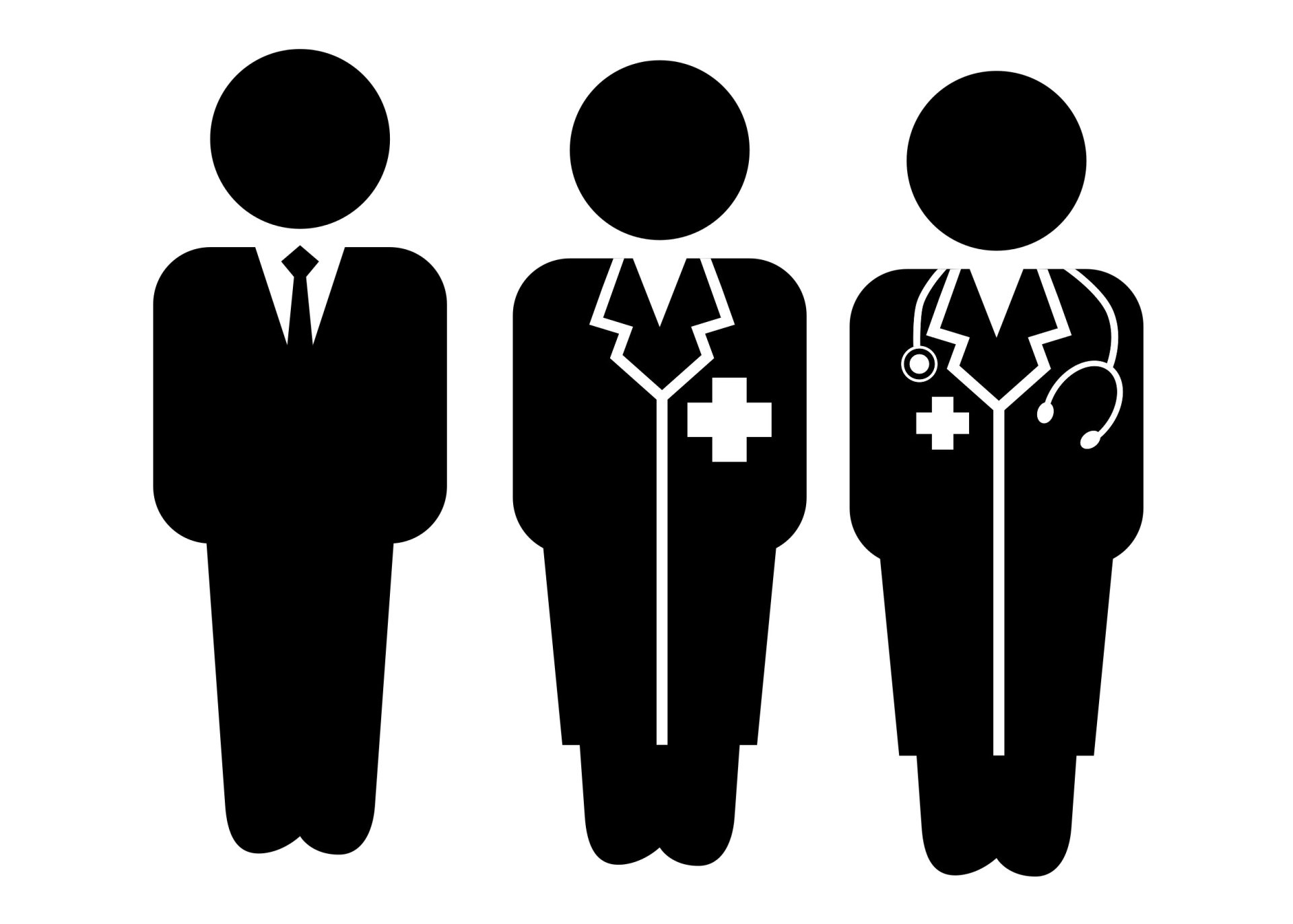The Role of the Pharmacist in Health Care Expanding and Evolving
- By North Carolina Medical Journal (NCMJ)
- •
- 01 Jun, 2017

Differences of opinion remain surrounding the future of healthcare in this country. Recent action and inaction by Congress has contributed greatly to the question of how health care will be delivered and paid for by the American people. Despite this uncertainty, it appears clear to most that the approach we are currently taking is neither financially sustainable nor sufficient in the consistent delivery of quality care to all Americans. At the same time, all payers of health care are rethinking reimbursement models including shifting from a fee for service to a fee for performance approach. What role will the health care professions play in the evolution of these new models of care? How will physicians, nurses, pharmacists, and other health care providers work together to optimize the efficiency and quality of care? How will our professions capitalize on the unique strengths of the education and experiences of all health care professionals as they explore and implement strategies that capitalize on the value of team care? How will our professions adjust from a fee for service to a fee for performance or value reimbursement model? And finally, how will this and the next generation of pharmacists contribute to this new value based care model?
This issue of the NCMJ focuses on these and other emerging opportunities and challenges facing the pharmacy profession, and will attempt to address new ways in which the pharmacy profession can add value to the care of the citizens of North Carolina. Over the past several decades, schools of pharmacy have been preparing their students to accept expanded practice roles in health care systems, primary care clinics, and community pharmacies. Health care reform initiatives have accelerated these changes and created an environment favorable to new, innovative pharmacy practices and roles that have the potential to add significant value to the provision of advanced medication therapy management. This issue discusses many of these new roles within the context of the shift from fee for service to fee for performance reimbursement models.
Evolving Practice Models
As discussed by Farley et al [1], medication misuse, underuse, and overuse contributes to approximately $300 billion, or 10%, of the health care costs in this country. The article discusses the rationale and early learnings from two active research projects taking place in North Carolina that were designed to describe and assess best practices in the delivery of patient centered services. These projects were intended to optimize medication use and control costs while building a business case to enable effective programs to be scaled and sustained. Consistent with the development, implementation, and evaluation of new pharmacy practice models, Easter and DeWalt [2] present critical healthcare delivery elements important in medication optimization and integral to the effectiveness of new value-based models. In addition, the role of enhanced team-based care and interdisciplinary education are discussed as important components to the achievement of patient centered care. Several challenges associated with the implementation and sustainability of such initiatives are discussed, as well as strategies toward the advancement of team-based care. Trygstad [3] presents the history of the pharmacy profession within the context of a performance-based marketplace and the challenges and opportunities that lie ahead. He emphasizes the importance of the profession of pharmacy to build sustainable practice models that partner with other healthcare colleagues in order to optimally serve their communities and add value to the care of patients. This point is further amplified by the paper from Urick et al [4] where they discuss the role pharmacists are playing in optimizing advanced medication management therapy within state Medicaid programs. By focusing pharmacists attention on the most clinically complex patients, significant improvement in both the quality and cost of healthcare can be realized. These authors report on some of the innovative work being performed in this area to a number of states across the country.
Expanding Roles
Delivery
Over the past four decades, the role of the pharmacist has evolved from an individual who was primarily responsible for safely and accurately distributing a medication product to a patient, to an individual who works side-by-side with physicians, nurses, and other healthcare professionals in sophisticated, highly specialized practice settings to assure appropriate medication therapy management. Bush and Daniels [5] discuss the changes that have taken place within health care systems, an environment that demonstrates the diverse and extensive advanced distributive and clinical services within institutional pharmacy practice. As population health management becomes an increasingly more important element of health care, greater importance is being placed on successfully transitioning the care of patients between sites and settings within an interdisciplinary environment. The implications on health care systems are enormous as patient readmissions linked to poor transitions of care have huge financial implications on the health care system. Since improper medication use is one of the most significant reasons for patient hospital readmissions, the importance of integrative pharmacy care that optimizes compliance and minimizes drug adverse events has created a vital opportunity for pharmacists to close the weak link in a highly vulnerable ecosystem. Scott et al [6] and Hemberg et al [7] provide excellent examples of pharmacists performing critical roles in both ambulatory care and community pharmacy settings in support of post hospitalization transition of care, with particular emphasis on the optimization of advanced medication therapy management.
Access
In addition to the expanding role of the pharmacist in the delivery of health care in a variety of practice settings, the community pharmacist has more opportunities to make a significant impact on the populations they serve. As the needs of society have changed in relation to the provision of health care, the pharmacist is positioned as one of the most accessible health professionals and his/her role has evolved to provide a variety of services for the health of both individuals and the community.
Pharmacists can enhance the health of individuals through the art and skill of compounding. Through compounding, the pharmacist partners with prescribers and patients to meet unique medication needs that are not met by commercially available products. Compounding is an age old art of the profession of pharmacy, which is utilized today to provide personalized medication therapies. In her commentary, Burch [8] describes patient care needs that can be met by compounding as well as reviews some of the regulations and best practices governing pharmaceutical compounding.
The significant role of the pharmacist in the management of individual health requires access to the pharmacist and other providers who provide this care. In her commentary, Nye [9] describes the utilization of telehealth to enhance the care of diabetic patients that are from rural communities. The ease of access via technology extends the reach and impact of the pharmacist into communities that need it the most.
Public Health
Beyond the care provided to individual patients, pharmacists have expanded their reach to influence the public health of communities. Trotta [10] describes the increased access to immunizations and increased immunization rates as a result of pharmacist provided immunizations in North Carolina. The effect on public health through increased immunization rates is a function of the unparalleled access patients have to pharmacists within the community.
More recently, the pharmacist has been at the forefront of addressing the public health crisis caused by opioid abuse. Muzyk et al [11] discuss the various ways the pharmacist facilitates appropriate prescription opioid use as well as provides access to naloxone, an opioid antidote, through the state-wide standing order. Management of opioids is complex, and the pharmacist is a critical partner in the process of treating pain and mitigating adverse events and/or the risk of abuse.
Another public health issue where pharmacists contribute is in the arena of disaster response. In their commentary, Moore and Kenworthy [12] provide an overview of the roles that the pharmacist plays in disaster response and preparedness, including providing continued medication therapy and/or acute care for patients affected by disaster. In a disaster response situation, the role of the pharmacist may not be limited to the more traditional roles of medication selection, proper storage, and distribution, but may include expanded roles such as education opportunities, triage, or immunizations. These roles in public health expand the impact of the pharmacist beyond the pharmacy counter and have significant impact in their community.
Conclusion
In a rapidly evolving health care system with increased demands for results and personalized care, the pharmacist is a critical partner in the provision of care. The skill set of the pharmacist provides a unique opportunity to deliver optimal medication utilization to manage acute and chronic diseases as well as many other roles that are beyond an outdated view that limits pharmacy practice to the distribution of medication. The pharmacist is uniquely positioned to provide disease state management through appropriate medication therapy management that has been demonstrated to improve patient outcomes and decrease overall health care costs. This role is more important than ever as the environment is demanding new practice and payment models that are required to further optimize care and outcomes while addressing the unsustainable increases in health care costs. While the role of the pharmacist on the health care team for optimal management of medication has been appreciated, the positive impact on wellness, outcomes, and overall health care costs through a full scope of practice highlights the significant contribution pharmacists make and can make in the ever changing health care system.


Researchers at the UNC Eshelman School of Pharmacy looked at what happens when pharmacists are tasked with conducting annual Medicare wellness visits in a medical practice. During the patients’ first visit, the pharmacists spotted at least one medication-related problem in more in than 90 percent of patients, the majority of which were able to be resolved by the pharmacist. During six- and twelve-month follow-up visits, they uncovered medication issues for all patients.
“Pharmacists performing annual wellness visits have a prime opportunity to provide comprehensive medication management, a much-needed service for older adults,” said Tasha Woodall, Pharm.D., lead author of the study and an assistant professor of clinical education at the School. “For every patient the pharmacist saw, there was something that could be done to make their medications work better for them.”
CMM ensures each patient’s medications are individually assessed to determine that each one is appropriate for the patient, effective for the medical condition, safe given the patient’s other conditions and medications and able to be taken by the patient as intended.
Wellness visits were created in 2011 as part of the Affordable Care Act. Medicare Part B covers an annual visit to the doctor for the purpose of developing or updating a personalized plan to prevent disease and disability. Pharmacists can conduct these visits under a physician’s supervision and be reimbursed by Medicare at the same rate. The visit includes activities such as administering a health survey, conducting a complete medication review and taking measurements of weight, blood pressure, and cognitive function.
The reimbursement received from Medicare for these visits exceeded the cost of delivering the care by more than 38 percent, the researchers found. Pharmacists lack what is known as “provider status” with Medicare and are not usually able to be reimbursed for services provided directly to patients. However, the annual wellness visit presents a special opportunity to improve pharmacists’ revenue generating potential.
“Having pharmacists conduct annual wellness visits is a win-win for patients and the medical practice,” said Suzanne Landis, M.D., M.P.H., a co-author of the paper and a recently retired MAHEC physician. “It results in a positive return on investment for primary-care practices and frees up physicians to focus on patients’ chronic and acute illnesses.”
Fifty-three patients at Mountain AHEC participated in the study. Their average age was 82, and each had three or more chronic medical conditions and were taking from three to 27 medications with 12 being the median number of meds taken. Thirty-nine were women. The pharmacists saw the participants in March, April and May of 2013. The study was published in the American Journal of Health-System Pharmacy.
Researchers found a total of 278 medication-related problems among the study participants. For nearly 33 percent of patients, the drug they were on was not the right one for their condition. More than 25 percent of patients weren’t being monitored as required for the medication they were taking. Nearly 17 percent weren’t receiving enough treatment for their condition, and almost 16 percent weren’t getting the right amount of medicine or not getting it at the right time.
In a 2014 study, UNC researchers examined the feasibility of using wellness visits as a way for physicians to pay for adding a pharmacist to a medical practice. They calculated that 1,070 wellness visits a year—or approximately six visits per day — are needed to cover a $120,000 pharmacist’s salary and would require about 40 percent of a pharmacist’s time to complete. The approach works best in larger medical practices, they found, which are more likely to have the needed volume of patients.
MAHEC started a pilot program in 2012 where a pharmacist took over the wellness visits for three physicians. Patients received information about the scope and purpose of the visits before coming in, which helped keep the visits focused and on schedule. Today, all wellness visits at MAHEC are conducted by pharmacists.

Physicians seeking a way to pay for the expertise of a pharmacist in their medical practices could look to Medicare annual wellness visits to help cover the cost, according to a study from the UNC Eshelman School of Pharmacy.
Medicare Part B covers an annual visit to the doctor for the purpose of developing or updating a personalized plan to prevent disease and disability. Pharmacists can conduct these visits under a physician’s supervision and be reimbursed at the same rate. The visit includes activities such as administering a health survey, conducting a complete medication review, and taking measurements of weight, blood pressure, and cognitive function.
Bigger is Better
It takes 1,070 wellness visits a year—or approximately six visits per day—to cover a $120,000 pharmacist’s salary, the study’s authors calculated. Their findings were published in the Journal of the American Pharmacists Association.
For a large medical practice (fifteen physicians), at least 18 percent of its eligible patients must complete an annual wellness visit with a pharmacist to reach $120,000 in reimbursements.
A medium-sized practice (five physicians) needs at least 54 percent of its patients to come in.
A small medical practice with two physicians would not have enough patients to afford a pharmacist funded by wellness visits alone.
UNC Eshelman School of Pharmacy and UNC School of Medicine faculty based in Asheville, North Carolina, conducted the study. They assumed that each practice has 2,000 patients per physician with 20 percent on Medicare. The hypothetical pharmacist in the study is available to see patients nearly thirty-eight weeks a year. The study also accounts for the fact that a patient’s first wellness visit is reimbursed at a higher rate than subsequent visits.
Here’s the Catch
Only 11 percent of eligible patients nationally actually use their wellness visit benefit, according to a 2013 report from the U.S. Department of Health and Human Services. That’s up from 9 percent in 2012. The wellness visits were created in 2011 as part of the Affordable Care Act.
The study authors practice at the Mountain Area Health Education Center clinic in Asheville. MAHEC would be a large practice in the study based on the number of patients seen. Physicians there started conducting wellness visits in 2011 and found them difficult to complete in the fifteen minutes allotted.
MAHEC started a pilot program in 2012 where a pharmacist took over the wellness visits for three physicians. Patients received information about the scope and purpose of the visits before coming in, which helped keep the visits focused and on schedule, says Courtenay Wilson, PharmD, senior author of the study and a MAHEC pharmacist.
“I can listen to their concerns and make sure that patients know that I’m hearing their concerns,” Wilson says. “I then schedule a follow-up visit with a physician who will know all of the issues that we have identified and have up-to-date records for the patient. It’s a nice partnership.”
By January 2013, all wellness visits at MAHEC were automatically scheduled with a pharmacist.
“From the doc’s perspective, the wellness visit takes a fair amount of time,” says Lisa Ray, MD, another author of the study and a MAHEC physician. “Handing it over to someone who is extremely competent frees us up to see other patients in those time slots. The added bonus is that every one of our Medicare patients has a pharmacist looking over their medication list.




